Since the mid-1970s, almost every jazz musician has owned a copy of the same book. It has a peach-colored cover, a chunky, 1970s-style logo, and a black plastic binding. It’s delightfully homemade-looking—like it was printed by a bunch of teenagers at a Kinkos. And inside is the sheet music for hundreds of common jazz tunes—also known as jazz “standards”—all meticulously notated by hand. It’s called the Real Book.
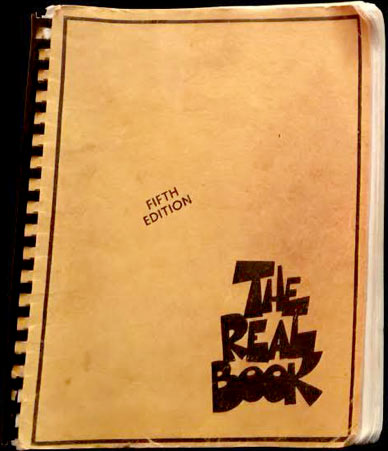
But if you were going to music school in the 1970s, you couldn’t just buy a copy of the Real Book at the campus bookstore. Because the Real Book… was illegal. The world’s most popular collection of jazz music was a totally unlicensed publication. It was a self-published book created without permission from music publishers or songwriters. It was duplicated at photocopy shops and sold on street corners, out of the trunks of cars, and under the table at music stores where people used secret code words to make the exchange. The full story of how the Real Book came to be this bootleg bible of jazz is a complicated one. It’s a story about what happens when an insurgent, improvisational art form like jazz gets codified and becomes something that you can learn from a book.
The History of Fake Books

Barry Kernfeld is a musicologist who has written a lot about the history of jazz and music piracy. Kernfeld says that long before the Real Book ever came out, jazz musicians were relying on collections of music they called fake books. Kernfeld says that the story of the first fake book began in the 1940s. “A man named George Goodwin in New York City, involved in radio in the early 1940s, was getting a little frustrated with all the intricacies of tracking licensing. And so he invented this thing that he called the Tune-Dex,” explains Kernfeld.

The Tune-Dex was an index card catalog designed for radio station employees to keep track of the songs they were playing on air. On one side the cards had information about a particular song, such as the composer, the publisher, and anything that one would need to know for payment rights. On the other side of the card were a few lines of bite-sized sheet music—just the song’s melody, lyrics, and chords so that radio station employees could glance at it and quickly recall the song. This abbreviated musical notation also made the cards useful to another group of people: working jazz musicians.

As a Black art form, jazz had developed out of a mix of other Black music traditions including spirituals and the blues. By the 1940s, a lot of “jazz” was popular dance music, and many jazz musicians were making their money playing live gigs in small clubs and bars. The standard jazz repertoire was mostly well-known pop songs from Broadway, or New York’s songwriting factory: “Tin Pan Alley.”
Jazz musicians would riff and freestyle over these songs. The art of improvisation has always been a key art form of jazz music. But what made the average gigging trumpeter or sax player truly valuable was their ability to play any one of hundreds of songs right there on the spot.
To be prepared for any request, musicians would bring stacks and stacks of sheet music to every gig. But lugging around a giant pile of paper could be really cumbersome—this is where the Tune-Dex came in. Someone figured out that you could gather together a bunch of Tune-Dex cards, print copies of them on sheets of paper, add a table of contents and a simple binding, and then sell the finished product directly to musicians in the form of a book. They called them “fake books” because they helped musicians fake their way through unfamiliar songs. These first fake books were cheaper than regular sheet music, and a lot more organized. They became an essential tool for this entire class of working musicians.
Bootleggers
Musicians loved these new fake books, but the music publishers hated them. They wanted musicians to buy legal sheet music, and so the publishing companies started cracking down on fake book bootleggers. That, of course, didn’t stop the bootleggers and by the 1950s, there were countless illegal fake books in existence, which were being used in nightclubs all across the country.
As helpful as fake books were, they had a lot of problems. They were notoriously illegible and confusingly laid out. The other big problem with these fake books at this point was that the music inside felt really out of date. The fake books hadn’t changed since the mid-40s, but jazz had. Disillusioned by commercial jazz that appealed to mainstream white audiences, a new generation of Black musicians took jazz improvisation to a new level. They experimented with more angular harmonies, technically demanding melodies and blindingly fast tempos. Their new style was called bebop.
Bebop was just the beginning. Over several decades, jazz exploded into this constellation of different styles. Meanwhile, the economics of jazz shifted too. There were fewer clubs, smaller paychecks, and more university jazz programs with steady teaching gigs. The ivory tower, not the nightclub, increasingly became a place for young musicians to learn, and for established musicians to earn a living. And if you’re going to jazz school, you need jazz books.
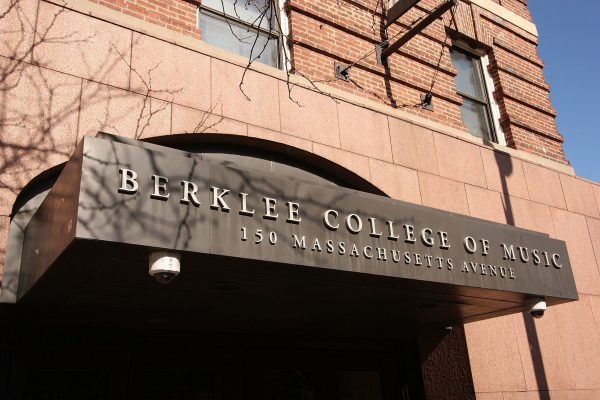
The fake books at the time hadn’t kept up with the music. They still contained the same old-fashioned collection of standards with the same old-fashioned collection of chord changes. If a young jazz musician wanted to try and play like Charles Mingus or Sonny Rollins, they weren’t going to learn from a book. That is… until two college kids invented the Real Book.
The Two Guys
In the mid-70s, Steve Swallow began teaching at Boston’s Berklee College of Music, an elite private music school that boasted one of the first jazz performance programs in the country. Swallow had only been teaching at Berklee for a few months when two students approached him about a secret project. “I keep referring them to them as ‘the two guys who wrote the book,’ because…they swore me to secrecy. They made me agree that I would not divulge their names,” explains Swallow. The “two guys” wanted to make a new fake book, one that actually catered to the needs of contemporary jazz musicians and reflected the current state of jazz. And they needed Swallow’s help.
From the very beginning, the students envisioned the Real Book as a cooler and more contemporary fake book than the stodgy, outdated ones they’d grown up with. They wanted it to include new songs from jazz fusion artists like Herbie Hancock, and free jazz pioneers like Ornette Coleman who were pushing the boundaries of the genre. They also wanted to include the old jazz standards from Broadway and Tin Pan Alley, but they wanted to update those classics with alternate chord changes that reflected the way modern musicians, like Miles Davis, were actually playing them.
Modern jazz musicians had altered a lot of classic standards over the years, with new harmonies and more complex chord changes. And to capture these new sounds, the students spent hours listening to recordings and transcribing what they heard, as best they could. It was a huge undertaking because most of these chord changes had never actually been written down. They weren’t necessarily thinking about it like this at the time, but the students were effectively establishing a new set of standardized harmonies for a handful of classic songs.
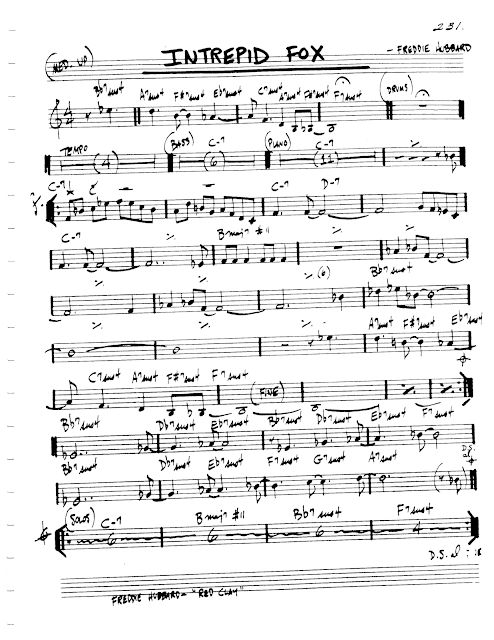

The music wasn’t the only part of their new fake book that the students wanted to improve. They also wanted to fix the aesthetic problems with the old fake books, and make something that was nice to look at and easy to read. One of “the two guys” notated all of the music by hand in this very distinctive and expressive script. He also designed and silk-screened the logo on the front cover: “The Real Book,” written in chunky, SchoolHouse Rock-style block letters.
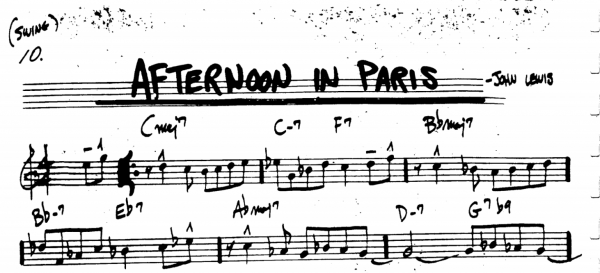
By the summer of 1975, the book was done, and the students took it to local photocopying shops where they cranked out hundreds of copies to sell directly to other students and a few local businesses near Berklee. Overnight, almost everyone had to have one. As the Real Book’s notoriety grew, so did the demand. The two students hadn’t printed enough copies to keep up, but it turns out, they didn’t need to. Not long after they created a few hundred copies of the book, bootleg versions began popping up all over the world. The Real Book had taken on a life of its own, and the students ironically found themselves in the same position as the music publishers and songwriters they’d originally cut out of the process, as they watched unlicensed copies of their work get duplicated and sold. After they released the first edition of the Real Book, the students put out two more editions to correct mistakes, and then their work was done. But the Real Book lived on, copied over and over again by new generations of bootleggers. And as the number of students in elite conservatory jazz programs continued to swell over the next few decades, the Real Book, with its modern repertoire, reharmonized standards, and beautiful handwriting, became the de-facto textbook for this new legion of jazz students. The unofficial official handbook of jazz.

The Real Real Book
Just like with old fake books, the success of the Real Book was a major problem for music publishers. Some companies released their own fake books, but they never managed to compete with the Real Book. The popularity of the Real Book meant that lots of people weren’t getting paid for their work. But in the mid-2000s, music executive Jeff Schroedl and the publisher Hal Leonard decided, if you can’t beat ’em, join ’em. They went through the Real Book page by page, secured the rights to almost every song, and published a completely legal version. You don’t need to buy the Real Book out of the back of someone’s car anymore. It’s available at your local music shop. They even wanted the same handwriting. Hal Leonard actually hired a copyist to mimic the old Real Book’s iconic script and turn it into a digital font, which means a digital copy of a physical copy of one anonymous Berklee student’s handwriting from the mid-70s will continue to live on for as long as new editions of the book are published.
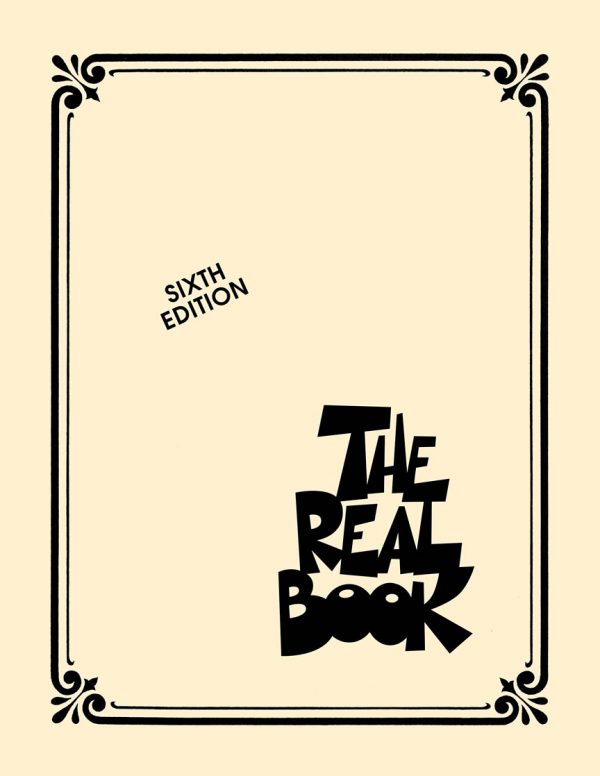
When Hal Leonard finally published the legal version of the Real Book in 2004, it was great news if you were a composer with a song in there. You’d finally be getting royalties from the sale of the most popular jazz fake book of all time. But that didn’t totally solve the intellectual property problems with the Real Book. While the legalization of the Real Book did resolve most of its flagrant copyright violations, it didn’t clear up authorship disputes that go back to the early days of jazz. Many jazz songs arise out of collective tinkering and improvising in jam sessions. It’s sometimes quite hard to say who exactly wrote a given song, and power dynamics often impacted whose name actually got listed as an official songwriter. And so there are likely many musicians whose names will never appear on the songs they helped write, even if those songs appear in the legal Real Book.
Useful Tool, or Reductive Cheat Sheet?
Even if we put the intellectual property questions aside for a second, fake books like the Real Book still have plenty of critics. Nicholas Payton is a musician and record label owner, and he compares the Real Book to a study guide or a cheat sheet—a way to distill this complicated art form into a manageable packet of digestible information. To Payton, jazz isn’t just information to be learned. It’s a way of thinking and a form of expression. And it’s fundamentally a Black cultural phenomenon that can’t be taken out of its historical context. Payton says that reading books like the Real Book, even going to music school, can really only get you so far. If you want to learn to play, at some point you’re going to have to immerse yourself in the culture of the music. For Payton (and many musicians) learning directly from elders, in person, is a crucial part of what it means to really know the art form.
There’s also the question of codification, and whether it’s useful to have one songbook filled with definitive versions of all these jazz tunes. Carolyn Wilkins has taught ensembles at Berklee College of Music, and she says that the chords that are written down in the Real Book sometimes get treated like the right way to play a particular song. But even though jazz has all of these “standards,” they’re not supposed to be played in one standard way. As you listen to different recordings of the same song by different jazz artists, it becomes obvious that there’s no one right way to play it. Wilkins says that the Real Book does have its place in jazz education. Over her years at Berklee, she’s seen how it can be a useful starting place as a tool to bring young jazz musicians together. The key, she says, is to treat the Real Book as a starting place. From there you need to go out and explore all the other ways people have played a particular song. “And then ultimately you must find your own way.”



Comments (16)
Share
I bought my Real Book in the early 2000s from a music store. It was an under the counter purchase. “I’m looking for a *real* nice book that I heard you guys carry.” Over the counter comes a heavy brown paper bag. I can’t remember what I paid for it. It’s still on my bookshelf today though.
I was a jazz student at the time and the rule at my school was that you could have a real book at rehearsal, but never on the bandstand.
Same! I bought mine before the official Hal Leonard version came out, and it was exactly the same experience: the guy at the store had a stack of them hidden under the counter. It was just this weird unspoken thing, where everyone knew about it and everyone had one, but nobody could “officially” acknowledge it!
I was 100% expecting to hear Adam Neely (youtube creator, music educator, Berklee alum) on this episode, and was so surprised that the voice of Mikel McCavana WASN’T Adam Neely. Their voices are so close!
Excellent episode as usual :)
Loved the episode! One thing you guys left out of the story: it’s not a REAL Real Book unless & until it’s completely dog-eared, coffee-stained, full of your own scribbled notes, and generally just in sad shape. I’ve only been playing jazz for about a year and mine is already properly dirty. My horn teacher made that a clear requirement!
Just the précis I needed! Prior to this, my only awareness of The Real Book was its unfortunate simplifying effect on The Girl From Ipanema, as recounted in a YouTube explainer by bassist Adam Neely (it’s about 30 minutes long and probably works reasonably well audio-only). I’m very glad to have the additional context!
Good stuff. In my experience most people who stick with jazz use The Real Book as intended: a starting point for learning the basic structure of a tune. Reharmonizing everything in there is a big ask, but it helps to have a baseline for gigs and then play then tunes that your ensemble truly loves the “proper way.” Also, the font that they developed off of that cat’s handwriting has worked its way into a lot of other music instruction funnily enough.
Thanks Mikel and Emmett for this historic look at The Real Book! A very cool informative read and entertaining listen! As an owner of an original Real Book I feel a slight – a very slight – part of Jazz history :)
I’ll also share this on my Jazz Guitar Life site.
Thanks again and take care.
Lyle Robinson
http://www.thejazzguitarlife.com
The latest trend is the app iReal. Just chords, with useful features like instant transposition to different keys. It’s all I need, as a bassist, to carry myself through a gig.
Now that Hal Leonard owns the rights to all the songs, it’s iReal that’s skirting copyright law! The app comes empty, then you go to the forums to download song packs. The files are just chord progressions, anyway, which aren’t copyrightable.
I see you guys have chosen the table of contents from an older edition as the banner image here – amongst real jazz heads “A Call For All Demons is tune #1” is a shibboleth on the order of “Han shot first” for Star Wars heads
Goddamnit, the story turned out to be racist again half way through. Should have seen it coming given it was about 20th century USA.
Love that jazz alternate closing theme!!! Real got real for the book!!!
Thanks for this podcast! I’m an amateur musician, didn’t earn $$/go pro (by my choice). I had seen some ‘Fake Books’ out there, didn’t know about the ‘Real Book;, but it makes perfect sense. No starting musician can afford the costs of staying legal (with the exception of Musicians Union Dues to allow them access to the tunes).
Add this to the history of How Piracy Helps (like Apple computers/SW) (another facet of history I was a small part of).
is it “B” actually is Barry Kernfeld ? haha! BTW I love this episode !THX !
Excellent article! Very well researched. It really brought back memories of when I played gigs a long time ago with an old cordovox player who had one of the original fake books and I remember looking at it and seeing how weird the titles looked in the old Courier typewriter font and the mis-aligned staves that made it look like the songs were literally cut and pasted in. But there were so many tunes in that book! I asked him where he got it he said “they’re illegal-I don’t remember who I bought it from, but they’re very hard to get.” I borrowed it from him and later his health turned bad and he died before I had a chance to return it to him and I didn’t know any of his relatives so I decided to keep it for myself in memory of him. But these people are right as the chord changes and such are really outdated in a number of these tunes.
As a non-jazz musician, my ancient fake book serves another purpose — when my aging parents want to hear or sing a certain song from their childhood, they know I can probably fumble thru the changes on the piano. And that’s all I use it for — a little family entertainment. Dunno where the old man got it.
Yeah, I bought a Real Book several years ago. I’m sure it was the legal version, because I didn’t have to go thru any skullduggery. It’s useful for the same kind of thing, and it’s a lot easier to read.
I bought the four original fake books under the counter when I was first starting out in 1961, and I still have them: Volumes 1 and 2 of 1000 songs each, Volume 3 of 500 songs, and Volumes 1 and 2 of Modern Jazz. They were $15 each, a sizable sum then.
The contents of them have since become available in various extra-legal digital collections, such as the Million Dollar Library.
The problem with them was that the changes were nowhere near correct for jazz, so one had to be creative to use them. At best, they were a source for melodies and a loose suggestion for the harmonies.